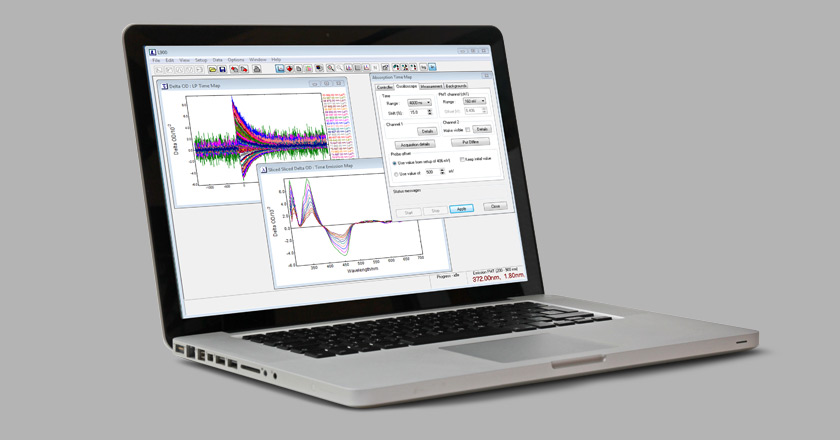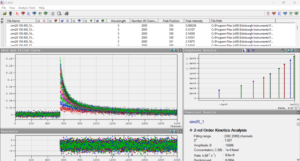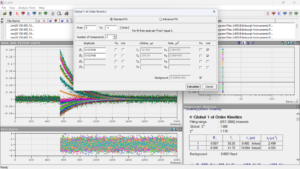
Send us your samples, and we can measure them live in an online demonstration
Contact us to arrange an online demonstration
"*" indicates required fields
FLASH is an advanced transient absorption curve fitting software complementary to the L900 package. Fitting complex kinetic decays only takes a few seconds with FLASH.
The program combines a user-friendly graphical interface with an advanced least-square minimisation algorithm fitting to models for 1st, 2nd, and combined 1st and 2nd order kinetics. Traces can be fitted simultaneously with linked parameters using global analysis.
FLASH is directly compatible with L900 data as well common formats such as ASCII. Results can be exported in a variety of text and image formats for ease of publication.


A set of TA data (in this case 2nd order kinetic traces) can be fitted and displayed simultaneously in FLASH.

Global analysis allows linking parameters across the full set of TA traces to analyse.
| Advanced Analysis Tools of FLASH |
|---|
| Analysis of first order kinetics, single curve analysis and multiple curve batch analysis, with up to four exponential terms |
| Global analysis of first order kinetics, including generation of lifetime discriminated spectra or decay associated spectra (DAS) |
| Analysis of second order kinetics, single curve Analysis and multiple curve batch analysis |
| Global Analysis of second order kinetics, including generation of time resolved spectra |
| Analysis of mixed first and second order kinetics, single curve analysis and multiple curve batch analysis |
| Global Analysis of mixed first and second order kinetics, including generation of time resolved spectra |
| Calculation of parameter confidence intervals by support plane analysis |
| The FLASH software licence is protected by a USB key |